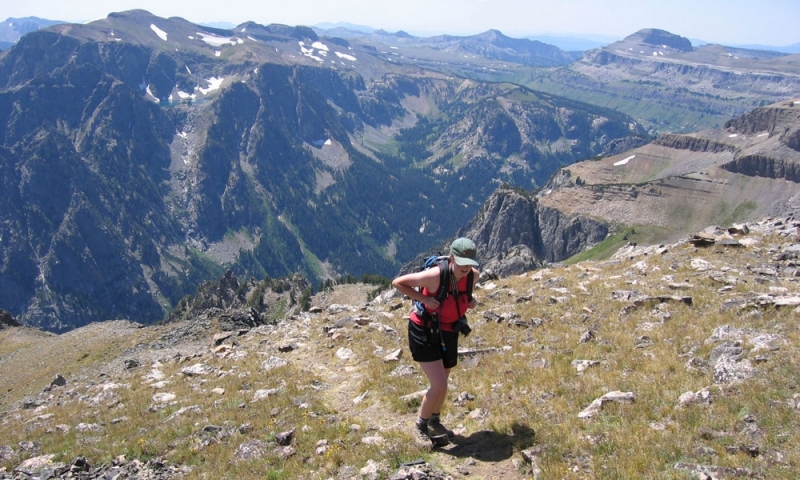- 1.8-7.6 miles (2-6 hours)
- Moderate to strenuous with 420-2,150 feet of elevation gain
- Death Canyon Trailhead, just south of the Moose Entrance Station on the Moose-Wilson Road
Overview
It may just be the name giving people second thoughts, but for some reason Grand Teton National Park’s Death Canyon Trail tends to see fewer visitors than some of the trails further north in the park. Regardless of its name, Death Canyon is filled with life of all types – flowers, trees, shrubs, moose, deer, bear, birds and more – and the low number of hikers makes it a great place to enjoy the Park’s natural beauty. While the entire Death Canyon Trail (which leads up to Static Peak, Alaska Basin and Death Canyon Shelf) is not for beginners, shorter hikes to Phelps Lake Overlook and Phelps Lake are easier and equally rewarding.
Trailhead
From the Moose Junction Park Entrance, take the Moose-Wilson Road south roughly 3 miles until you reach a right-hand turn that leads to the Death Canyon Trailhead. The trailhead is not accessible to trailers or motor homes. In winter, parking is available at the turnoff along the Moose-Wilson Road.
Trail Details
Phelps Lake Overlook
- 1.8 miles
- 2 hours
- 420 feet elevation gain
- Moderate out-and-back
Phelps Lake
- 4 miles
- 4 hours
- 1,140 feet elevation gain
- Strenuous out-and-back
Static Peak Trail Junction
- 7.6 miles
- 6 hours
- 2,150 feet elevation gain
- Strenuous out-and-back
Static Peak Divide
- 15.6 miles
- 10 hours
- 5,250 feet elevation gain
- Very strenuous out-and-back
- May require an ice axe – check with ranger before going
Plan & Prepare
Be sure to bring plenty of food and water, as you won’t find any at the trailhead or along the trail. Extra layers are equally important, since mountain weather can be unpredictable. If you plan on doing an overnight trip, you’ll need a permit (available at the ranger station) and bear canisters. At higher elevations, snow may be present until July.








